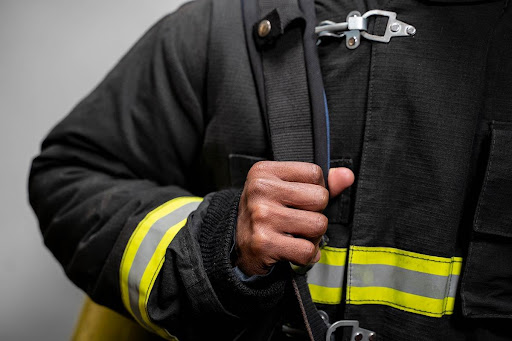In the heart of Coastal North Carolina, where the tranquility of ocean waves meets the tempestuous might of Mother Nature, a band of unsung heroes emerges when the storms rage: the first responders. These dedicated men and women stand on the front lines of disaster, often risking their lives to ensure the safety of their communities. Through their unwavering commitment and resilience, they transform the ordinary into the extraordinary, earning the heartfelt gratitude of the communities they serve.
The Preparation Phase
 Image Source: stefamerpik on Freepik
Image Source: stefamerpik on Freepik
Before the storm’s fury descends upon Coastal North Carolina, first responders engage in a meticulous preparation phase that involves collaboration, planning, and technological support.
First responders from various agencies unite in extensive planning sessions to ensure a coordinated approach. They identify potential issues, allocate resources, and fine-tune evacuation strategies. This collaboration forms the foundation for an effective and comprehensive storm response.
Evacuation plans are of paramount importance in a region with complex geography. First responders work closely with local authorities to designate evacuation zones, set up emergency shelters, and communicate evacuation orders. Rigorous training further hone their skills for storm-specific scenarios.
Technology aids first responders in numerous ways. Advanced weather monitoring systems provide real-time storm data. Communication systems, including satellite phones and radio networks, ensure connectivity in challenging conditions. Geographic Information System (GIS) technology assists in mapping affected areas, and drones offer critical aerial views for damage assessment. These technological advancements enhance the efficiency and effectiveness of coastal storm preparedness.
Brave Acts Amidst the Storm
When the tempest descends upon Coastal North Carolina, first responders perform extraordinary feats, facing immense dangers and demonstrating unwavering determination.
First responders undertake daring rescues, from saving residents stranded on rooftops to navigating treacherous floodwaters. These narratives highlight their selflessness, from lifeboats braving towering waves to emergency teams working tirelessly through the night. These are tales of unwavering dedication and remarkable valor.
In the midst of a storm, first responders confront life-threatening challenges, navigating debris-filled floodwaters and swift currents. Fallen trees, electrical wires, and uncertain structural integrity in flooded buildings add to the peril. Yet, they courageously venture into this chaos, fully aware of the hazards they face.
The resilience and determination of first responders in Coastal North Carolina are awe-inspiring. They persevere through exhaustion, psychological strain, and the loss they witness. Their spirit remains unyielding, making them beacons of hope during the darkest hours of a coastal storm. Their unwavering dedication and bravery shine through the adversity they confront.
Community Support and Collaboration
 Image Source: NOC
Image Source: NOC
Community support and collaboration play pivotal roles in Coastal North Carolina’s disaster response. Community cooperation is the foundation of effective disaster response. Informed and prepared communities are the first line of defense against storms. Their solidarity, information-sharing, and support networks form the backbone of resilience.
Local volunteers and organizations are unsung heroes, providing crucial support to first responders. They assist with various aspects of disaster response, from managing shelters to providing resources. This collaboration between first responders, volunteers, and organizations underscores the community’s dedication to protecting their own.
First responders bear an emotional burden when witnessing the suffering and loss in their community. Psychological support is vital to help them cope with this toll. Specialized counseling and community understanding are crucial in ensuring these heroes maintain their resilience.
Community support and collaboration are cornerstones of Coastal North Carolina’s disaster response. They not only fortify the efforts of first responders but also reflect the strength of united communities in the face of adversity.
Lessons Learned and Future Challenges
Amid the aftermath of a coastal storm, first responders in Coastal North Carolina engage in a crucial phase of reflection and adaptation. They glean wisdom from past experiences, adapt to the evolving landscape of climate change and storm frequency, and reaffirm their dedication to safeguarding the coastal communities they serve.
First responders understand the significance of learning from the past. Each storm teaches invaluable lessons about what works and what can be improved. After-action assessments are conducted, analyzing response effectiveness and identifying areas for enhancement. Insights gained from these evaluations drive continuous improvement in disaster response strategies.
Whether it’s refining evacuation procedures or optimizing communication networks, the aim is to be better prepared for the next storm. This commitment to learning ensures that future response efforts are more streamlined and efficient.
Climate change has brought about a new normal in Coastal North Carolina: more frequent and severe storms. First responders are acutely aware of this evolving landscape and are dedicated to adapting their approaches. Climate-resilient infrastructure, updated floodplain management, and incorporating advanced technology are all part of the strategy.
In parallel, increasing public awareness about climate change’s impacts and the importance of readiness is paramount. Adaptation and mitigation efforts are ongoing to ensure Coastal North Carolina can withstand future storms in a changing climate.
Throughout the reflection and adaptation process, one thing remains constant: the unwavering dedication of first responders to safeguard their coastal communities. Their commitment does not waver in the face of increasing challenges. The knowledge that the next storm could be just around the corner keeps them vigilant and ready.
Their heroism is not limited to the storm’s peak; it endures in the days, months, and years of preparation and adaptation between each tempest. They stand as a testament to the enduring human spirit and the resilience of communities facing the increasing threats of nature.
Wrapping Up
In the wake of Coastal North Carolina’s tempests, first responders stand as unwavering sentinels of courage and dedication. They are not only the heroes who rescue and protect but also the architects of resilience, learning from the past to prepare for the future. As storms grow more frequent and severe due to climate change, their adaptation efforts encompass not only strategies and infrastructure but also community awareness.
The bedrock of first responders’ commitment remains unshaken through all these challenges and reflections. Their heroism doesn’t waver; it endures in the face of the evolving landscape of coastal threats. Coastal North Carolina’s first responders are more than heroes; they are the living embodiment of unwavering resilience, safeguarding their communities against the relentless forces of nature.



Leave a Reply